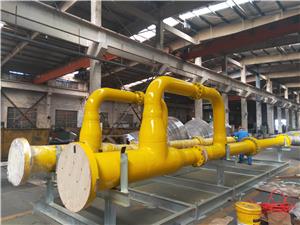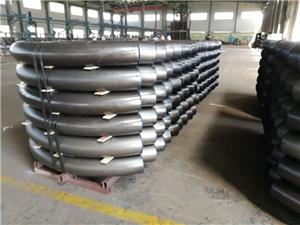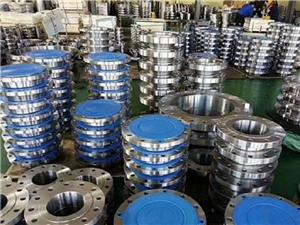What metals can be used for pipe prefabrication?
In the pipeline prefabrication process, metal materials are widely used in various industrial and municipal projects due to their excellent mechanical properties, durability and ability to adapt to various working conditions. Do you know what metals can be used for pipe prefabrication?
1. Carbon steel
Carbon steel is one of the most commonly used materials for prefabricated pipes. It is widely used in various working conditions due to its excellent mechanical properties and good weldability.
Application:
Industrial pipelines: such as oil and natural gas transmission pipelines.
Petrochemical: Process piping for refineries and chemical plants.
Building piping: Such as piping for heating and cooling systems.
Advantage:
High strength: able to withstand high pressure and large load, suitable for applications requiring high strength.
Low price: Compared with other metal materials, carbon steel has lower cost and good economy.
Good processability: It has good weldability and processability, and is suitable for a variety of connection and processing techniques, such as welding, cutting, bending, etc.
Shortcoming:
Poor corrosion resistance: It is easy to rust in humid or corrosive environments and requires anti-corrosion treatment, such as coating, galvanizing, etc.
Heavy weight: Compared with some lightweight metals, such as aluminum, carbon steel has a higher density, which increases the difficulty of transportation and installation.
2. Stainless steel
Stainless steel has excellent corrosion resistance and is suitable for harsh corrosive environments.
Application:
Food processing: used in food production equipment and conveying pipelines.
Pharmaceutical: used in pharmaceutical production equipment and clean pipeline systems.
Chemical Industry: Pipes used to transport corrosive chemicals.
Nuclear industry: used in nuclear reactor cooling systems and other key components.
Advantage:
Corrosion resistance: It can resist the corrosion of various chemical media and is suitable for harsh chemical environments, such as acid, alkali, salt and other media.
High temperature resistance: maintains good mechanical properties under high temperature conditions and is not easy to deform and oxidize.
Beautiful appearance: It has a smooth surface, easy to clean and maintain, and not easy to deposit pollutants.
Long life: Strong durability and long service life, reducing the frequency of maintenance and replacement.
Shortcoming:
Higher price: The cost is higher than carbon steel, especially high-end stainless steel grades.
Difficulty in welding: The welding process has high requirements and requires professional equipment and technology. Welding defects are prone to occur during the welding process, such as intergranular corrosion, stress corrosion cracking, etc.
3. Alloy steel
Alloy steel improves its performance by adding specific elements (such as chromium, nickel, molybdenum, etc.) and is suitable for high temperature and high pressure environments.
Application:
Electric power industry: such as boiler pipes and high-pressure steam pipes.
High temperature and high pressure pipelines: such as process pipelines in refineries and chemical plants.
Chemical equipment: such as reactors and pressure vessels.
Advantage:
High temperature and high pressure resistance: It has excellent performance in extreme high temperature and high pressure environments and is not prone to creep and fatigue.
High strength: higher strength and hardness than ordinary carbon steel and stainless steel.
Corrosion resistance: By adding alloy elements, the resistance to chemical media is improved.
Good weldability: Although alloy steel has higher welding requirements, good welding quality can be obtained through appropriate welding processes.
Shortcoming:
Higher cost: Because it contains many precious elements, the cost is significantly higher than that of carbon steel.
Difficulty in processing: It requires high processing technology and equipment, and is prone to work hardening and cracking.
Complex heat treatment: In order to obtain optimal performance, alloy steel usually needs to undergo complex heat treatment processes, such as quenching and tempering.
4. Copper and copper alloys
Copper and copper alloys have excellent thermal conductivity and antibacterial properties and are often used in specific fields.
Application:
Air conditioning and refrigeration: such as piping systems for air conditioning and refrigeration equipment.
Water supply: such as drinking water pipes and sanitary pipe systems.
Ship pipelines: such as cooling water and fuel delivery pipelines in ships.
Advantage:
Corrosion resistance: Especially suitable for seawater and other corrosive media, with good oxidation resistance.
Good thermal conductivity: suitable for systems requiring rapid heat transfer, such as heat exchangers.
Antibacterial: The natural antibacterial properties make it suitable for drinking water systems to prevent bacterial growth.
Good flexibility: It has good ductility and plasticity, and is easy to bend and shape.
Shortcoming:
High Price: Copper and copper alloys cost more, especially when prices fluctuate.
Relatively low strength: Use in high-pressure environments requires thickening the wall thickness, which increases costs.
Easy to oxidize and discolor: It is easy to form an oxide layer when exposed to air, affecting the appearance.
5. Aluminum and aluminum alloys
Aluminum and aluminum alloy pipes are lightweight and have good corrosion resistance.
Application:
Aerospace: Such as piping systems in aircraft and spacecraft.
Construction: such as curtain walls and roof drainage systems.
Chemical industry: such as low-pressure chemical equipment and pipelines.
Advantage:
Lightweight: Low density, reducing structural weight, suitable for applications requiring weight reduction, such as aerospace and high-rise buildings.
Corrosion resistance: It has good antioxidant properties in natural environments, especially suitable for humid and corrosive environments.
Easy to process: It has good formability and processability, and can be used for various processing techniques such as welding, cutting, and bending.
Good electrical conductivity: widely used in electrical engineering, such as cables and wires.
Shortcoming:
Lower strength: It is not as good as steel in applications with high strength requirements and is prone to deformation and damage.
Limited pressure-bearing capacity: Wall thickness needs to be increased to handle high-pressure conditions, adding cost and weight.
Complex heat treatment: Some aluminum alloys require rigorous heat treatment for optimal performance.



